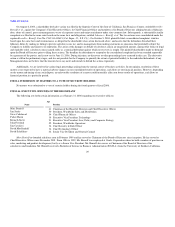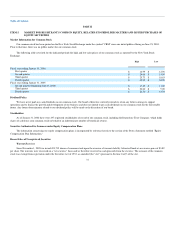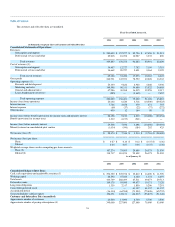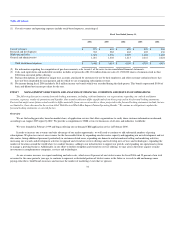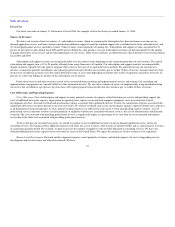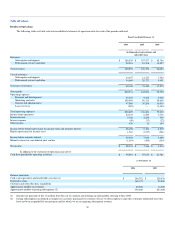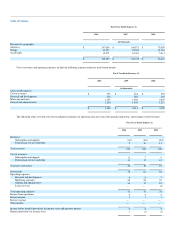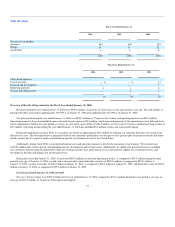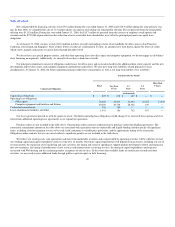Salesforce.com 2005 Annual Report Download - page 40
Download and view the complete annual report
Please find page 40 of the 2005 Salesforce.com annual report below. You can navigate through the pages in the report by either clicking on the pages listed below, or by using the keyword search tool below to find specific information within the annual report.
Table of Contents
estimates and assumptions that affect the reported amounts of assets, liabilities, revenues, costs and expenses, and related disclosures. On an ongoing basis,
we evaluate our estimates and assumptions. Our actual results may differ from these estimates under different assumptions or conditions.
We believe that of our significant accounting policies, which are described in note 1 of the notes to our consolidated financial statements, the following
accounting policies involve a greater degree of judgment and complexity. Accordingly, these are the policies we believe are the most critical to aid in fully
understanding and evaluating our consolidated financial condition and results of operations.
Revenue Recognition. We recognize revenue in accordance with SEC Staff Accounting Bulletin No. 104, "Revenue Recognition" and Emerging Issues
Task Force, or EITF, Issue No. 00-21, "Revenue Arrangements with Multiple Deliverables."
We recognize revenue when all of the following conditions are satisfied: (1) there is persuasive evidence of an arrangement; (2) the service has been
provided to the customer; (3) the collection of our fees is reasonably assured; and (4) the amount of fees to be paid by the customer is fixed or determinable.
Our arrangements do not contain general rights of return.
We recognize subscription revenues ratably over the contract terms beginning on the commencement dates of each contract. Support revenues from
customers who purchase our premium support offerings are recognized similarly over the term of the support contract. As part of their subscription
agreements, customers benefit from new features and functionality with each release at no additional cost. In situations where we have contractually
committed to an individual customer specific technology, we defer all of the revenue for that customer until the technology is delivered and accepted. Once
delivery occurs, we then recognize the revenue over the remaining contract term.
Consulting services and training revenues are accounted for separately from subscription and support revenues when these services have value to the
customer on a standalone basis and there is objective and reliable evidence of fair value of each deliverable. When accounted for separately, revenues are
recognized as the services are rendered for time and material contracts, and when the milestones are achieved and accepted by the customer for fixed price
contracts. The majority of our consulting service contracts are on a time and material basis. Training revenues are recognized after the services are performed.
For revenue arrangements with multiple deliverables, we allocate the total customer arrangement to the separate units of accounting based on their relative fair
values, as determined by the price of the undelivered items when sold separately.
In determining whether the consulting services can be accounted for separately from subscription and support revenues, we consider the following
factors for each consulting agreement: availability of the consulting services from other vendors, whether objective and reliable evidence for fair value exists
for the undelivered elements, the nature of the consulting services, the timing of when the consulting contract was signed in comparison to the subscription
service start date, and the contractual dependence of the subscription service on the customer's satisfaction with the consulting work. If a consulting
arrangement does not qualify for separate accounting, we recognize the consulting revenue ratably over the remaining term of the subscription contract.
Additionally, in these situations we defer the direct costs of the consulting arrangement and amortize those costs over the same time period as the consulting
revenue is recognized. The deferred cost on our consolidated balance sheet totaled $1,686,000 at January 31, 2006 and $874,000 at January 31, 2005.
Accounting for Deferred Commissions. We defer commission payments to our direct sales force. The commissions are deferred and amortized to sales
expense over the noncancelable terms of the related subscription contracts with our customers, which are typically 12 to 24 months. The commission
payments, which are paid in full the month after the customer's service commences, are a direct and incremental cost of the revenue arrangements. The
deferred commission amounts are recoverable through the future revenue streams under the noncancelable customer contracts. We believe this is the
preferable method of accounting as the
37




